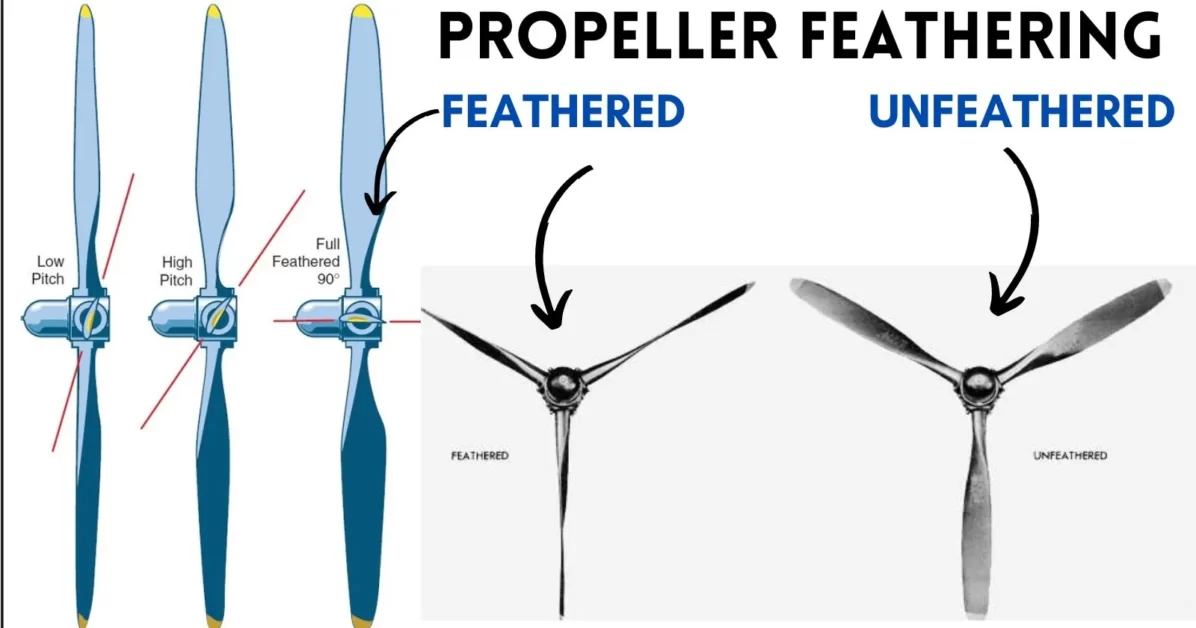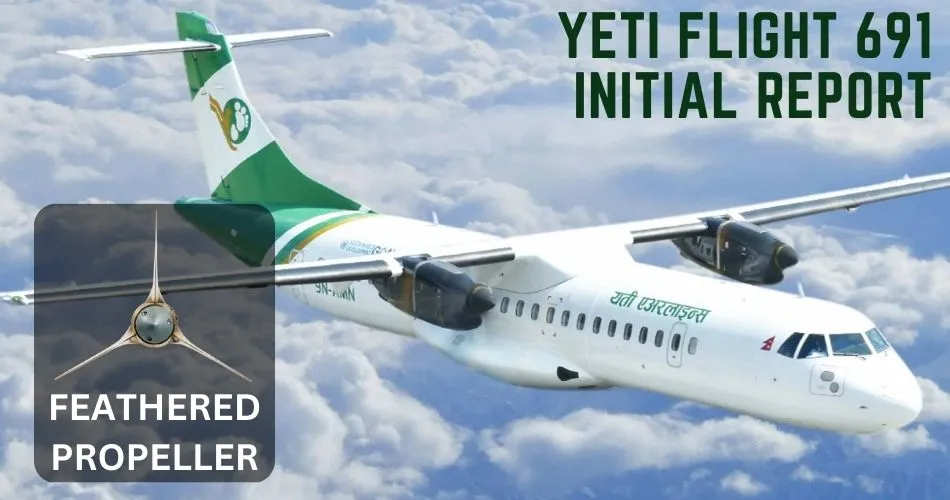The Ministry of Culture, Tourism, and Civil Aviation (MoCTCA) published a press release to inform about the preliminary investigation report of the Yeti Airlines Flight 691 crash near the Pokhara International Airport.
The preliminary report concludes the major reason behind the fatal crash could be the propeller feathering of the ATR 72 ‘9N-ANC’. The investigation committee carefully assessed the Flight Data Recorder (FDR), and Cockpit Voice Recorder (CVR), and came to the finding that both the engine propeller on the ‘9N-ANC’ was in the feathered position prior to the crash.


As per the data collected, and analyzed from FDR, and CVR, Yeti Airlines ATR 72-500 ‘9N-ANC’ was final for Pokhara Int’l Airport Runway 12 when both engine propellers went into feathered position during Base Leg.
The black box of the ATR 72 aircraft was sent to Transport Safety Investigation Bureau (TSIB) in Singapore. Officials from Nepal including flight exports, and investigation committee members assisted with the investigation, and they have already returned to Nepal after the completion of the initial investigation.
TSIB Singapore, BEA France, TSB Canada, P&W Canada, and EASA jointly executed the inspection of FDR and CVR. The team also carried out ATR 72 simulator test for a detailed understanding of the fatal crash that killed all 72 on board.
With the preliminary report being published, critics are questioning how both engine propellers went into a feathered position.
What is propeller feathering?

A propeller feathering is a type of propeller motion that allows the blades of the propeller to become parallel to the airflow. This propeller action is only executed if there is engine failure.
Once activated, the feathered propeller aligns parallel to the oncoming airflow, and decreases overall drag to increase the gliding distance during engine failure.
The propeller pitch can be changed up to an angle of approximately 90 degrees with a feathering mechanism.
The reason behind the unusual propeller feathering on the Yeti’s ATR 72 is not disclosed as it requires further investigation. There might be technical glitches or human error. The final report will be published by the Ministry as soon as the investigation committee comes up with a decisive conclusion.
Yeti Airlines Flight 691 Crash
On the fateful day of January 15th, 2023, a Yeti Airlines flight 691 was on its way from Kathmandu’s Tribhuvan International Airport (VNKT) to Pokhara International Airport (VNPR), when tragedy struck.

The ATR 72 with registration number ‘9N-ANC’ had 72 occupants on board including 68 passengers of different nationalities and 4 crew members. It was unable to make its final approach to the newly constructed airport in Pokhara, the tourist city.
The flights arriving from Kathmandu normally use Runway 30 as it is a direct approach path, and can be navigated easily by following the Lekhnath city. However, Yeti’s flight 691 requested VNPR ATC to land at Runway 12 which is near the domestic airport. For this approach, the aircraft needs to fly aside from the international airport and make a significant turn to align with Runway 12.
Also Read: Yeti Airlines Flight 691 Post Crash Analysis (Expert ATR Captain’s Viewpoint included)
Are you familiar with Yeti Airlines Flight 691 and the crash it was involved in? Investigators are continoulsy working for final report. If you've had any experience flying on Yeti Airlines before, please leave your opinion below!





